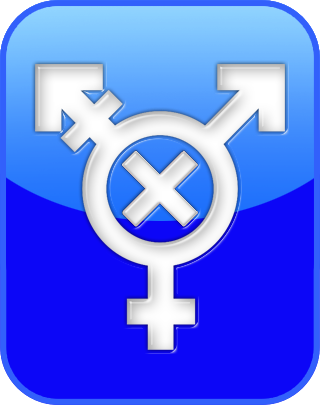Academically reviewed by Dr. Jennifer Schulz, Ph.D., associate professor of psychology
Transphobia Test
This transphobia test, adapted from research by Michael H. Miner and his colleagues at the University of Minnesota, seeks to measure transphobia (that is, discomfort with people who have a transgender identity).
Could you be said to be a transphobic person? For each of the following statements, indicate how well it describes you below.
Question 1 of 28
I would like to experience a deep connection with someone who is transgender.
| Disagree | Agree |
NEXT
The IDRlabs Transphobia Test (primarily for Cisgender; IDR-TTpfC) was developed by IDRlabs. The IDR-TTT is based on the work of Dr. Walter Bockting, Ph.D., Michael H. Miner, and colleagues, who authored the paper: “The Transgender Identity Survey: A Measure of Internalized Transphobia.” The IDR-TTT is not associated with any specific researchers in the field of psychopathology, social psychology, personality psychology, or any affiliated research institutions. The test is meant to raise awareness of transphobia and does not endorse or condone transphobia of any kind. For more, please consult our Terms of Service.
The IDRlabs Transphobia Test (primarily intended for cisgender individuals) was informed by the survey on transgender identity as published in Bockting, W. O., Miner, M. H., Swinburne Romine, R. E., Dolezal, C., Robinson, B., Rosser, B., & Coleman, E. (2020). The Transgender Identity Survey: A Measure of Internalized Transphobia. LGBT health, 7(1), 15–27.
The test provides feedback such as the following: Transgender Prejudice: Measures the degree to which you harbor negative stereotypes and views about people who are transgender. Transgender people often report struggling with their identity as a consequence of prejudiced attitudes against them that are held by the public. Indeed, transgender people may have a hard time feeling at ease with their gender identity because of the negative stereotypes they have been exposed to from others. Being the victims of such stereotypes may cause transgender people to internalize the negative judgments that are often presented to them through ridicule, bullying, harassment, rejection, and stigma.
Cisgender Hegemony: Measures the degree to which you believe that a “real” or “normal” human identity can only be that of a cisgender man or woman. People who score high on this scale often believe that non-conventional gender identities (such as intersex, queer, non-binary, or non-binary transgender), are purposefully choosing to be different and, as such, inviting ridicule or discrimination on purpose. As a result of cisgender hegemony, many transgender people may feel that they will be accepted only if they try to pass themselves off as cisgender and that they would not be able to feel valid, safe, or understood if they expressed their true gender identity.
Transgender Alienation: Indicates the degree to which you believe that transgender people are so different from cisgender people that it would not be advisable to seek meaningful or close relationships between the two groups (and/or that it would be better if transgender people kept to themselves). For their part, transgender people often report struggling with feelings of isolation and a sense of being separate and no one being able to understand them — a sense that is then reinforced and egged further on by the segregationist beliefs that may be held by the people around them.
Transgender Scorn: Measures the degree to which you hold overtly hostile views of people who are transgender. As opposed to Transgender Prejudice, Transgender Scorn reflects not just negative biases and preconceptions, but overtly negative judgments about people who are transgender. Some transgender people report developing feelings of shame, self-disparagement, and/or feeling uncomfortable with their gender identity as a result of having been exposed to the scornful views of others concerning individuals who are transgender. As such, Transgender Scorn helps maintain the social stigma associated with transgender nonconformity through intolerance and may lead transgender individuals to have a more negative self-appraisal than they otherwise would have had.
As the publishers of this free online transphobia test, which allows you to screen yourself for transgender prejudice, cisgender hegemony, transgender alienation, and transgender scorn, we have striven to make the test as reliable and valid as possible by subjecting it to statistical controls and validation. However, free online tests and quizzes such as the present transphobia test do not provide professional assessments or recommendations of any kind; the test is provided entirely “as-is.” For more information about any of our online tests and quizzes, please consult our Terms of Service.
References
- Bockting, W. O., Miner, M. H., Swinburne Romine, R. E., Dolezal, C., Robinson, B., Rosser, B., & Coleman, E. (2020). The Transgender Identity Survey: A Measure of Internalized Transphobia. LGBT health, 7(1), 15–27.
- Bockting WO, Miner MH, Swinburne Romine RE, et al.: Stigma, mental health, and resilience in an online sample of the US transgender population. Am J Public Health 2013;103:943–951.
- Bradford J, Reisner SL, Honnold JA, Xavier J: Experiences of transgender-related discrimination and implications for health: Results from the Virginia Transgender Health Initiative Study. Am J Public Health 2013;103:1820–1829.
- Prajna Paramita Choudhury, Neetu S. Badhan, Joyti Chand, Sanjay Chhugani, Rashmi Choksey, Salman Husainy, Camillia Lui & Eric C. Wat (2009) Community Alienation and its Impact on Help-seeking Behavior Among LGBTIQ South Asians in Southern California, Journal of Gay & Lesbian Social Services, 21:2-3, 247-266, DOI: 10.1080/10538720902772196
- Hendricks ML, Testa RJ: A conceptual framework for clinical work with transgender and gender nonconforming clients: An adaptation of the Minority Stress Model. Prof Psychol Res Pract 2012;43:460–467.

 English
English  Español
Español  Português
Português  Français
Français  Polski
Polski  Türkçe
Türkçe 